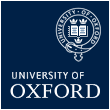The second fifty years. The wise, wonderful, years – these years are a privilege because they allow us to enhance the warp and weft of life. Age must be turned upside down to provoke thinking and actions which dispel the myths, images and stereotypes that abound regarding the ‘old’. The world is experiencing profound demographic shifts with exponential increases in individuals aged 50+. This longevity revolution, coupled with migration, has major political, fiscal, economic, well-being and social consequences for regions, countries and societies. Research funded by the Selwyn Foundation entitled Belonging as an Ageing Asian in Auckland, New Zealand, by Professor Edwina Pio, exhorts us to engage with the multidimensional concept of intersectional ageing; the complex braiding of age, well-being, culture, migration and faith along with the physical, psychological, cognitive and social domains: Or grey ceilings along with glass, concrete and bamboo ceilings. Age comes a wooing in life’s second half with gilded memories, superb skills, wisdom and extraordinary experiences. Yet the conventional narrative asks question such as is beauty burnt away? Is age a drain on the health system? Can beauty only be perceived as youthful in body as the media appears to suggest? Thus, the world spends billions of dollars on plastic surgery, most of it on fountain-of-youth treatments for wrinkles, trying to close the gap between interior vitality and exterior transformation.
In Auckland, there are 31,353 Asians aged over 65 (based on the 2018 census), with the three largest groups in this age bracket being Chinese (16,836), Indians (9,345) and Koreans (1,434). Recent data from the 2023 Census indicates that Auckland represents a third of the population in New Zealand at 33.2%. New Zealand has an ageing population and those 65+ in Auckland represent 13.3% of the city’s population. The ethnic diversity of Auckland continues with a growth rate of 17.1% for the Asian category. Asians in Auckland now make up 31.3% of the population or 518,178 people.
Belonging as an Ageing Asian in Auckland emerged from an uneasy rustle in my soul, as international research indicates that ageing ethnic minority migrant communities are one of the most deprived and excluded groups. Accessibility, ethnic enclaves, structural disadvantages in education, liveable wages, and systemic stress are key areas of disquiet. Additionally, these groups face the accumulation of stigma, hardship, inequality, marginalisation, and the stress of doing 3D work; that which is dirty, dangerous and difficult. Changing demography makes increasing migration and ageing stark realities for many people. Moreover, like many ageing populations globally, these groups tend to face material hardships, loneliness, abuse, and neglect. The findings from the huge amount of research on these topics indicates that we need a creative repertoire of stories to bring recognition to the micro generosities possible every day, in our homes, communities and places of work, to redefine and reframe public discourse. While well-being domains such as parks, safe open spaces, beaches, places of worship, free medical health and free transport are utilised by ageing Asians, there is also a dark picture to be reckoned with; this is elder abuse which remains largely invisible. Elder abuse appears to be pervasive in Aotearoa. Elder abuse is practice that is challenging, and can involve physical, emotional, financial, psychological, and sexual abuse and is often underreported. The research, which stresses the importance of ageing gracefully and dying with dignity, seeks to embolden policy makers and those working in the aged care sector to craft a well-resourced ethnic strategy, reduce fragmentary funding, create connectors, and incentivise organisations which employ older adults. With the exponential growth of diverse communities in Auckland, and the city’s ageing realities, we must travel together wisely by invoking the language of our collective humanity, beyond neutral positions, policy lurches and awkward embraces.
We must create a world for all ages – a multi-layered and delicate process. I stress the importance of educators, policy makers, charities, faith-based and business organisations. In creating a culture for graceful, dignified ageing, I pivot towards wisdom which is holistic to give voice to many more people and to engage in collaborative efforts at three levels, micro, meso and macro. At the micro level, physical activity, volunteering, technology use and stress management are promising intervention targets. Potential meso-level interventions include intergenerational programs, education and narrative reframing. At the macro-level, anti-age-discrimination legislation, workplace policies and incentivising organisations to employ people 50+ may help combat internalised ageism and promote improved psychosocial well-being for aging adults so that they can relish being a student and a sage.
May we have the courage to open ourselves to others. One’s neighbour’s eyes open another realm to explore and discover with wonder our diverse humanity. Might today be an opportunity to wrap ourselves up in beautiful memories. The question we need to ask is: What kind of world do we want and what are we prepared to do to make that a reality?
About the Author
Professor Edwina Pio ONZM is Associate Professorial Fellow at Oxford Institute of Population Ageing & Research Fellow Blackfriars Hall.
Opinions of the blogger is their own and not endorsed by the Institute
Comments Welcome: We welcome your comments on this or any of the Institute's blog posts. Please feel free to email comments to be posted on your behalf to administrator@ageing.ox.ac.uk or use the Disqus facility linked below.













_square_sm.jpg)